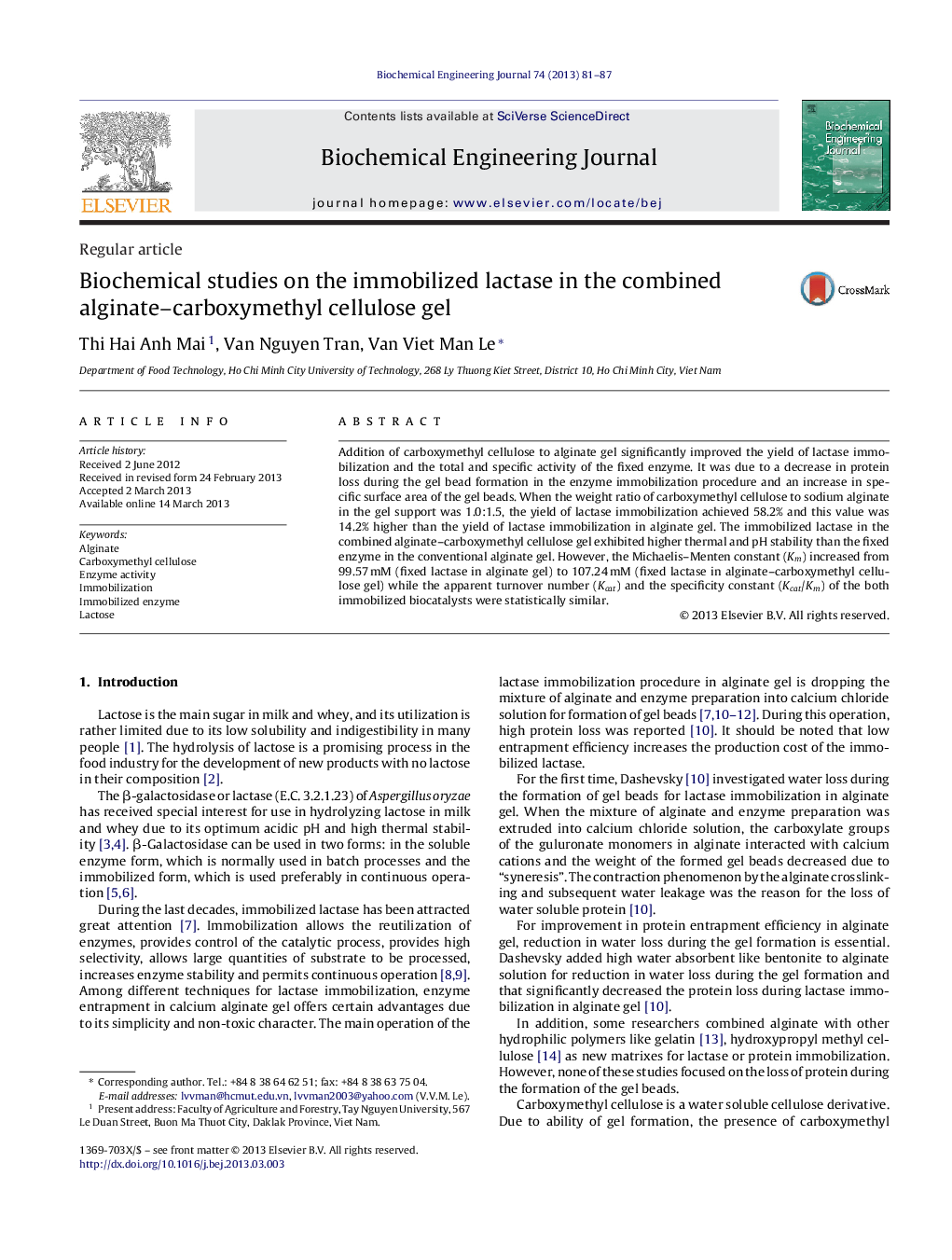| Article ID | Journal | Published Year | Pages | File Type |
|---|---|---|---|---|
| 3404 | Biochemical Engineering Journal | 2013 | 7 Pages |
•Adding carboxymethyl cellulose to alginate gel increased yield of lactase fixation.•Lactase in the new combined gel exhibited higher activity than that in alginate gel.•The new support improved thermal and pH resistance for the fixed lactase.
Addition of carboxymethyl cellulose to alginate gel significantly improved the yield of lactase immobilization and the total and specific activity of the fixed enzyme. It was due to a decrease in protein loss during the gel bead formation in the enzyme immobilization procedure and an increase in specific surface area of the gel beads. When the weight ratio of carboxymethyl cellulose to sodium alginate in the gel support was 1.0:1.5, the yield of lactase immobilization achieved 58.2% and this value was 14.2% higher than the yield of lactase immobilization in alginate gel. The immobilized lactase in the combined alginate–carboxymethyl cellulose gel exhibited higher thermal and pH stability than the fixed enzyme in the conventional alginate gel. However, the Michaelis–Menten constant (Km) increased from 99.57 mM (fixed lactase in alginate gel) to 107.24 mM (fixed lactase in alginate–carboxymethyl cellulose gel) while the apparent turnover number (Kcat) and the specificity constant (Kcat/Km) of the both immobilized biocatalysts were statistically similar.
